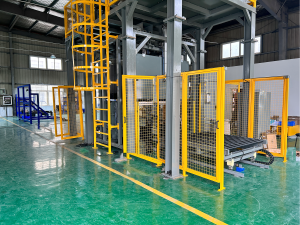Helium, the second lightest element on the periodic table, has a wide range of applications due to its unique properties. It is colorless, odorless, tasteless, non-toxic, and notably lighter than air. However, what happens when helium leaks, and what are the implications? This article will delve into the effects of a helium leak, its potential hazards, and the necessary precautions and responses in such situations.

Understanding Helium
Helium is a noble gas that is chemically inert, meaning it does not readily react with other elements or compounds. This property makes helium safe to use in various industries, including medical imaging, deep-sea diving, and electronics manufacturing, among others. However, despite its inertness, a helium leak, especially in a confined space, can result in serious consequences.
Effects of a Helium Leak
When helium leaks, due to its lighter-than-air property, it tends to rise and diffuse rapidly into the atmosphere. In an open environment, this is typically not a problem as the helium will disperse and become diluted in the vast volume of air. However, the situation can be quite different in a closed or poorly ventilated space.
Oxygen Displacement: In confined spaces, a significant helium leak can displace oxygen, leading to an oxygen-deficient environment. Humans require a certain concentration of oxygen to breathe, and a decrease in oxygen levels can lead to hypoxia, a condition characterized by insufficient oxygen in the body or a region of the body. Initial symptoms include shortness of breath, rapid breathing, and elevated heart rate. As oxygen levels continue to fall, symptoms may progress to confusion, loss of consciousness, and even death in extreme cases.
Asphyxiation Risk: Asphyxiation is the primary risk associated with a helium leak in a confined space. As helium displaces the oxygen, it can lead to asphyxiation, a condition where the body or a region of the body is deprived of oxygen, causing unconsciousness or death.
Cryogenic Burns and Frostbite: In its liquid form, helium is extremely cold. If a leak occurs from a vessel containing liquid helium, it can rapidly vaporize, causing the temperature of surrounding surfaces to drop dramatically. This can lead to cryogenic burns or frostbite upon contact with human skin.
Preventing and Responding to Helium Leaks
Preventing helium leaks primarily involves regular inspection and maintenance of helium-containing systems. Leak detection can be performed using various methods, including ultrasonic, infrared, and helium mass spectrometer leak detection.
In the event of a helium leak, immediate steps should be taken to ventilate the area to prevent oxygen displacement. If the leak is in a confined space, it’s crucial to avoid entering the area until it has been adequately ventilated. In situations where entry is necessary, appropriate breathing apparatus should be used.
In conclusion, while helium is generally safe and non-reactive, a helium leak in a confined space can lead to serious consequences due to oxygen displacement. Understanding the potential hazards associated with a helium leak and taking the necessary precautions can help prevent dangerous situations. Regular maintenance and inspection of systems containing helium, along with appropriate response measures in case of a leak, are crucial to ensure safety.







